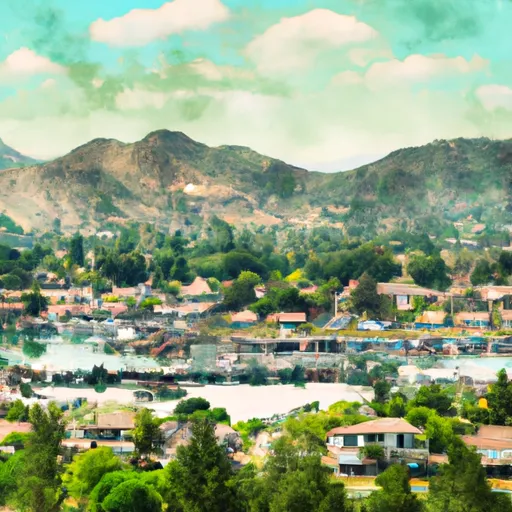-
 Snoflo Premium
Snoflo Premium
Get unlimited access to all our content
With no Ad interruptions! - Start Your Free Trial Login with existing account
Green-Valley-Lake
Eden Index
Climate
9.2
•
Recreation
9.4
•
Community
1.1
•
Safeguard
7.3/10

Green Valley Lake is a small mountain community located in the San Bernardino Mountains of Southern California. The climate is typical of a high-elevation mountain area, with cool summers and cold winters. The area is fed by several streams and is part of the Santa Ana River watershed. Hydrology constituents include a diverse array of aquatic flora and fauna, including rainbow trout, crayfish, and salamanders. Outdoor recreation opportunities include fishing, boating, hiking, and camping in the surrounding forests. The area is also close to several ski resorts, making it a popular winter destination. Overall, Green Valley Lake offers a peaceful mountain retreat for those seeking outdoor activities in a beautiful natural setting.
What is the Eden Index?
The Snoflo Eden Index serves as a comprehensive rating system for regions, evaluating their desirability through a holistic assessment of climate health, outdoor recreation opportunities, and natural disaster risk, acknowledging the profound impact of these factors on livability and well-being.
Climate Health Indicator (CHI): 9.2
Green-Valley-Lake receives approximately
806mm of rain per year,
with humidity levels near 72%
and air temperatures averaging around
9°C.
Green-Valley-Lake has a plant hardyness factor of
7, meaning
plants and agriculture in this region tend to thrive during the non-winter months.
By considering the ideal temperature range, reliable water supplies, clean air, and stable seasonal rain or snowpacks, the Climate Health Indicator (CHI) underscores the significance of a healthy climate as the foundation for quality living.
A healthy climate is paramount for ensuring a high quality of life and livability in a region, fostering both physical well-being and environmental harmony. This can be characterized by ideal temperatures, reliable access to water supplies, clean air, and consistent seasonal rain or snowpacks.
Weather Forecast
Streamflow Conditions
Northern Mojave
Area Rivers
Northern Mojave
Snowpack Depths
Northern Mojave
Reservoir Storage Capacity
Northern Mojave
Groundwater Levels
Recreational Opportunity Index (ROI): 9.4
The Recreational Opportunity Index (ROI) recognizes the value of outdoor recreational options, such as parks, hiking trails, camping sites, and fishing spots, while acknowledging that climate plays a pivotal role in ensuring the comfort and consistency of these experiences.
Access to outdoor recreational opportunities, encompassing activities such as parks, hiking, camping, and fishing, is crucial for overall well-being, and the climate plays a pivotal role in enabling and enhancing these experiences, ensuring that individuals can engage in nature-based activities comfortably and consistently.
Camping Areas
| Campground | Campsites | Reservations | Toilets | Showers | Elevation |
|---|---|---|---|---|---|
| Yucaipa Regional Park | 51 | 2,658 ft | |||
| Big Bear Military | None | 7,009 ft | |||
| March ARB Military | None | 1,509 ft | |||
| San Gorgonio | 54 | 6,508 ft | |||
| Bogart Park | 26 | 3,171 ft | |||
| Barton Flats | 52 | 6,404 ft | |||
| Green Valley | 36 | 7,075 ft | |||
| Pine Knot | 48 | 6,984 ft | |||
| Dogwood | 93 | 5,739 ft | |||
| Lake Perris State Rec Area | 351 | 1,600 ft |
Catastrophe Safeguard Index (CSI):
The Catastrophe Safeguard Index (CSI) recognizes that natural disaster risk, encompassing floods, fires, hurricanes, and tornadoes, can drastically affect safety and the overall appeal of an area.
The level of natural disaster risk in a region significantly affects safety and the overall livability, with climate change amplifying these risks by potentially increasing the frequency and intensity of events like floods, fires, hurricanes, and tornadoes, thereby posing substantial challenges to community resilience and well-being.
Community Resilience Indicator (CRI): 1.1
The Community Resilience Indicator (CRI) recognizes that education, healthcare, and socioeconomics are crucial to the well-being of a region. The CRI acknowledges the profound impact of these elements on residents' overall quality of life. By evaluating educational resources, healthcare accessibility, and economic inclusivity, the index captures the essential aspects that contribute to a thriving community, fostering resident satisfaction, equity, and social cohesion.

